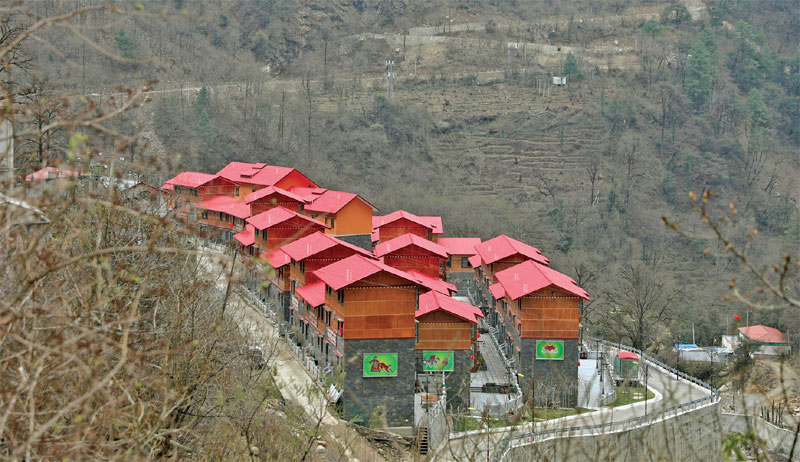China expands settlements, such as Xiaokang border-defence villages along the LAC in TAR
Prasun K. Sengupta
Since 2006, Beijing has implemented large-scale programmes to ‘rehouse’ the rural population of the Tibet Autonomous Region (TAR) under a policy called ‘Comfortable Housing.’

In parallel, China has accelerated the relocation of nomadic herders in the eastern part of the Tibetan plateau, mostly in Qinghai province, and laid the ground for similar policies in other parts of the plateau, as part of ‘Building a New Socialist Countryside’. This, Beijing says, is designed to rapidly increase the living standards of rural Tibetans and boost the local economy. Construction of new settlements by China all along the India-China and Bhutan-China border began as far back as 2012.
Since then, several such townships have sprung up in Cona county and Lhunze county in the Shannan prefecture of Tibet Autonomous Region (TAR), as well as in the Gongzhangpu in Luoza County along the Bhutan-China frontier. More than 600 ‘well-off’ Mandarin (Xiaokang) border defence villages were to be constructed.
Part of a poverty alleviation effort, the strategic goal is rural revitalisation under the theme of ‘Building a Happy Home for the Guardians of the Sacred Land’. Each such township/ village is to be connected to transportation, broadband communications and public utilities grids, schools and health centres.
Most of the construction is taking place in the key border Counties of Nyingchi—which borders India’s Arunachal Pradesh state—Ngari (Ali) and Shigatse (Rikaze). Communist Party of China (CPC) cadres were to be transferred to each village. There were intensive political education sessions to undermine and eliminate the Dalai Lama’s influence, such as the training of monks in Nyingchi, on countering ‘espionage activities by the Dalai Lama.’
Zhu Hong, head of Gar County Committee, said: ‘Our goal is to build Demchog Village into a party-building position and an indestructible battle fortress led by demonstrations on the border, keep the gate for the motherland, let the people live in peace, and make everyone a guardian of sacred land and happiness.’
The new developments were also heralded in a letter President Xi Jinping sent to two sisters from a herding family in a remote Tibetan area close to the border soon after the 19th Communist Party Congress in Beijing in 2017. Xi encouraged the family ‘to set down roots in the border area, safeguard China’s territory and develop their home-town’. The enthusiastic promotion of the new Xiaokang villages seems at least in part intended to demonstrate and underline the loyalty of leaders and officials in Tibetan areas to the CPC leadership. The new settlements and infrastructure also underline the core policy of military and civilian integration in Tibet, a priority of the CPC.
The role of People’s Liberation Army’s (PLA) political commissars has been expanded to include research across the border with India, while CPC officials posted in ‘border defence villages’ are also involved in political work, building relationships and influence on the Indian and Nepalese sides of the border. In November 2019, workers completed the joining of the Bayul Bridge for the railway across the Yarlung Tsangpo River (which is the upper reaches of the Brahmaputra River). They also completed the 13,073-metre Bayul Tunnel. The Lhasa-Nyingtri section of the railway line is part of a second, 1,700km rail route linking Tibet with China (following the opening of the line from Golmud in Qinghai in 2006), connecting Lhasa to Sichuan’s provincial capital of Chengdu.
In March 2018, it was disclosed that the aim of building the Xiaokang townships is to ensure consolidation of border areas and border security. It is to ‘align a high sense of political responsibility and historical mission with the masses of the border region’ and the CPC Committee. An article in China’s Agriculture Economics on 18 December 2017 gave details of the model well-off border defence villages. Describing Tibet as the ‘forefront of the national security and the Tibet border as the most impoverished area in China’, it said a total of 628 model well-off Xiaokang townships are to be constructed in 21 border counties along the TAR's frontiers stretching from Ngari (Ali) district to Nyingchi (Linzhih) within three years.
You must be logged in to view this content.

